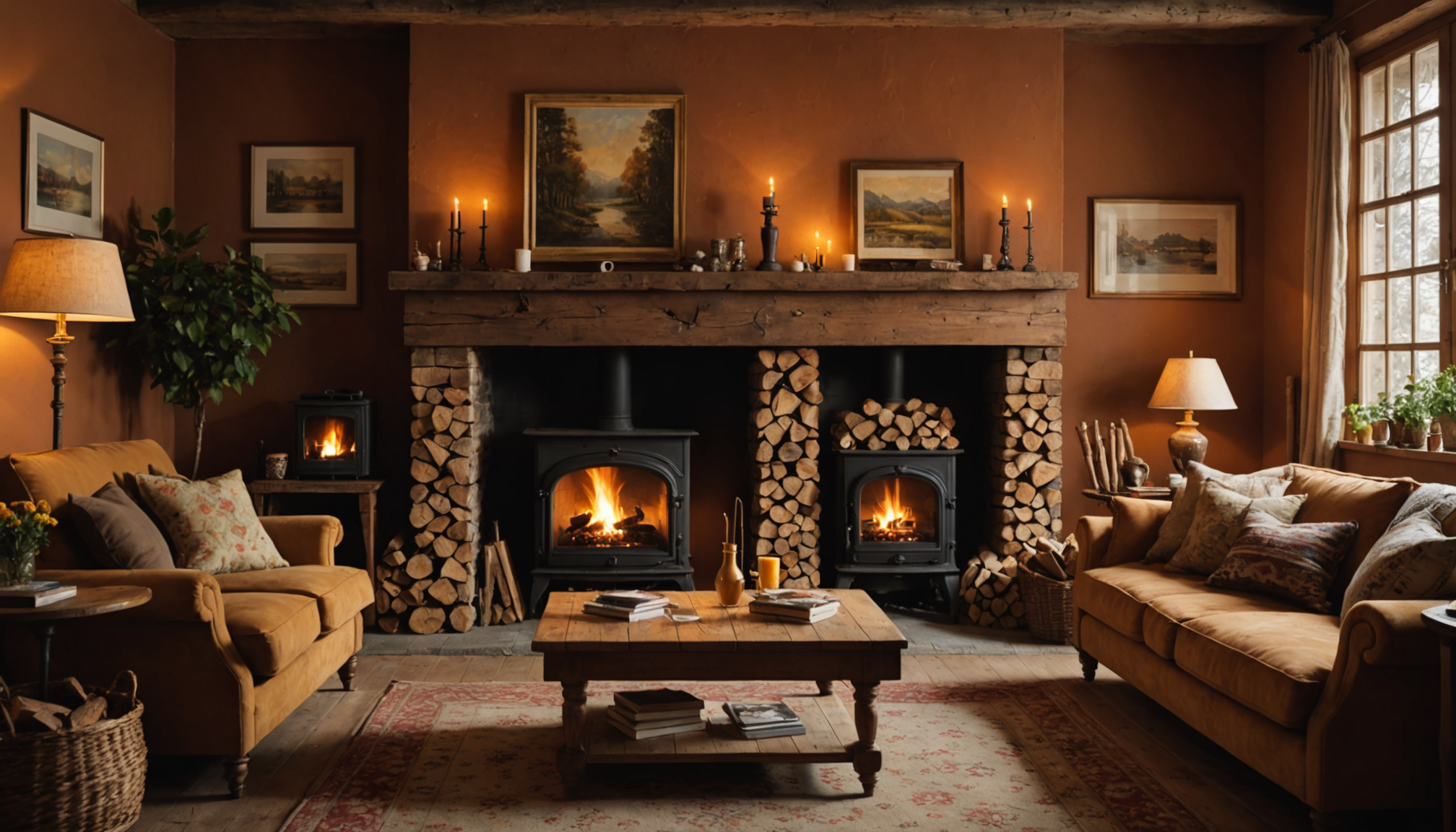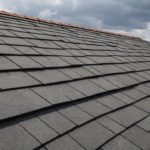Comparing the warmth and comfort offered by wood and gas fireplaces can be a rewarding endeavor, especially when considering the ambiance and tactile experience each type provides. Both types have distinct characteristics that cater to different preferences and needs, offering unique benefits that contribute to the overall coziness of your home.
Wood fireplaces have long been cherished for their traditional appeal, evoking a sense of nostalgia and connection to nature. The warmth from a wood fire is often described as more intense and encompassing, providing a hearty and comforting heat that radiates throughout the room. The crackling of the logs and the distinctive aroma of burning wood create an immersive sensory experience that many find irreplaceably comforting.
In contrast, gas fireplaces offer convenience without sacrificing the warmth essential to creating a comfortable atmosphere. While the heat may feel slightly different compared to a wood-burning fire, gas fireplaces provide steady and controllable warmth at the flip of a switch, making them an attractive option for those who desire immediate comfort without the preparation that wood fireplaces require. Additionally, gas fireplaces often come with adjustable settings that allow homeowners to regulate the heat output more precisely, enhancing both comfort and energy efficiency.
To better understand these differences, the table below outlines some key aspects of warmth and comfort provided by each type:
| Aspect | Wood Fireplace | Gas Fireplace |
| Heat Output | High, variable with fire size | Consistent, adjustable with settings |
| Warmth Distribution | Radiant heat throughout the room | Even, direct heat distribution |
| Atmosphere | Natural, rustic aroma and sound | Clean, modern aesthetic |
| Start-up Time | Requires time to light and build | Immediate, instant ignition |
When considering warmth and comfort, it’s essential to also reflect upon your lifestyle and heating needs. If you enjoy the process of tending to a fire and appreciate the multisensory experience it offers, a wood fireplace might suit your preferences. Conversely, if convenience and precision are your priorities, a gas fireplace can deliver these with minimal effort.
Ultimately, the choice between a wood and gas fireplace heavily depends on the kind of ambiance you wish to cultivate in your home, as well as the practical considerations of each type’s heat and comfort delivery.
cost and efficiency analysis
Analyzing the costs and efficiency of wood versus gas fireplaces is crucial for making an informed decision that best suits your budgetary and usage needs. Consider the following factors to comprehensively evaluate which option is more favorable in terms of upfront costs, ongoing expenses, and overall energy efficiency.
- Installation Costs:
- Wood Fireplace: Installation costs for wood fireplaces tend to be higher due to the need for a chimney, hearth, and sometimes structural modifications to accommodate a flue. If your home doesn’t already have a chimney, the costs can increase significantly.
- Gas Fireplace: Conversely, gas fireplaces are often less expensive to install if gas lines are already in place. They require venting, but this system can often be less complex than the full chimney system needed for wood fireplaces.
- Fuel Costs and Availability:
- Wood Fireplace: The cost of wood can vary significantly depending on your location, the source of the wood, and the availability of resources. You’ll also need a consistent supply, and purchasing in bulk or pre-season can offer some savings. Additionally, it’s essential to factor in the costs of storing the wood.
- Gas Fireplace: Natural gas or propane generally provides a more stable pricing structure compared to wood. Though gas prices can fluctuate based on market conditions, they typically offer more predictable costs. Utilizing existing utility lines can further reduce expenses compared to buying propane tanks.
- Operational Efficiency:
- Wood Fireplace: While they generate a significant amount of heat, wood fireplaces are often less efficient due to heat loss through the chimney. Traditional wood-burning fireplaces might convert only about 15-30% of the wood’s energy into usable heat.
- Gas Fireplace: Featuring efficiencies that can exceed 75%, gas fireplaces are designed to minimize heat loss. Many modern designs include fans to distribute heat more evenly and effectively within a space, making them an energy-efficient choice.
- Maintenance Costs:
- Wood Fireplace: These require regular maintenance, such as chimney sweeping to remove buildup, which increases costs over time. Neglecting this can lead to safety hazards, further potentially causing costly repairs.
- Gas Fireplace: Minimal maintenance is required for gas units, but annual inspections are recommended to ensure proper operation and address any gas line issues. The straightforward care involved generally results in lower ongoing expenses.
Understanding these aspects of cost and efficiency can significantly influence your choice between wood and gas fireplaces. By carefully considering installation and maintenance expenses along with fuel availability and efficiency, you can decide which option aligns better with your financial parameters and desired long-term investment.
environmental impact considerations
When weighing the environmental impact of wood and gas fireplaces, numerous factors must be considered to make a sustainable choice. Each type of fireplace has its unique ecological footprint based on fuel source, emissions, and overall impact on air quality.
Wood fireplaces, while offering a traditional feel, are often criticized for their contribution to air pollution. When burned, wood releases particulate matter, volatile organic compounds (VOCs), and carbon monoxide into the atmosphere. These pollutants can negatively affect indoor air quality and contribute to outdoor air pollution, particularly in densely populated areas. More efficient wood-burning technologies have emerged, such as EPA-certified stoves and inserts, which can reduce emissions significantly by promoting a more complete combustion process. However, these improvements require homeowners to upgrade existing systems, which can involve a considerable investment.
The carbon footprint of wood fireplaces largely depends on the sustainability of the wood supply. If sourced sustainably, such as from local forests managed for timber production, wood can be a renewable resource. Practices like harvesting deadwood or using wood from tree trimming in urban areas can enhance sustainability. Still, deforestation concerns arise when wood is sourced unsustainably, which can negate the environmental benefit.
Gas fireplaces, on the other hand, are often considered more environmentally friendly in terms of emissions. Natural gas and propane, the fuels typically used in gas fireplaces, burn more cleanly than wood, leading to fewer particulate emissions and lower levels of pollutants like carbon monoxide and nitrogen oxides. This results in a reduction in smog formation and less impact on both indoor and outdoor air quality. Despite this advantage, gas fireplaces are not entirely free from environmental concerns. The extraction and transportation of natural gas can contribute to habitat disruption, greenhouse gas emissions, and other environmental issues associated with fossil fuel consumption.
Considering the life cycle analysis of each option, gas fireplaces typically offer a smaller carbon footprint than wood-burning counterparts, especially in urban areas where air quality is paramount. Still, it is crucial for potential owners to weigh the source of their fuel and the efficiency of the fireplace system. By opting for high-efficiency models and supporting sustainable practices in fuel procurement, homeowners can mitigate some of the environmental concerns associated with both types.
Ultimately, the decision between wood and gas fireplaces should reflect not only personal preference and lifestyle considerations but also a thoughtful evaluation of each option’s environmental impact. Understanding these factors helps ensure that the choice aligns with broader environmental goals, whether that means minimizing emissions or supporting sustainable resource management.
maintenance and upkeep
Maintaining a fireplace is a critical aspect that can influence your decision between a wood and a gas fireplace, as each type involves different levels of upkeep and associated tasks. This section delves into the maintenance and upkeep requirements necessary for the optimal performance and safety of both wood and gas fireplace solutions.
Wood fireplaces, with their classic appeal and authentic ambiance, require a more intensive maintenance routine than their gas counterparts. One of the primary tasks involves regular chimney cleaning to prevent the buildup of creosote, a byproduct of burning wood that accumulates on the chimney walls. If left unchecked, creosote can become a significant fire hazard, potentially leading to chimney fires. Therefore, an annual inspection and professional chimney sweep are essential to ensure safety and efficiency. Additionally, removing ashes from the hearth, cleaning the firebox, and managing the soot accumulation on glass doors are part of the routine tidying chores that wood fireplaces demand.
Beyond regular cleanings, it’s crucial to season and store firewood properly to prevent it from becoming a home for pests or developing mold. Storing wood at a safe distance from your home on a raised platform under a canopy can help in keeping the wood dry and ready for burning. Another maintenance aspect to consider is the occasional repair of brickwork or the replacement of worn-out components like doors or grates, which is essential for maintaining both functionality and aesthetics.
In contrast, gas fireplaces generally require less intensive upkeep, offering a more convenient option for homeowners who prefer lower maintenance. Regular cleaning to remove dust and debris from vents and fans ensures that the fireplace operates efficiently without obstruction. An annual professional inspection is highly recommended to check gas connections, pilot lights, and vents for any potential leaks or malfunctions. This not only ensures efficiency but also addresses safety concerns, as even small gas leaks can be hazardous.
Gas fireplaces also typically feature components like ceramic logs or glass media that need periodic cleaning to maintain appearance and performance. Some models may include a fan or blower system to enhance heat circulation, which, similar to vents, should be kept dust-free to function effectively. Additionally, it’s important to replace any worn or damaged parts, such as gaskets or igniters, to keep the fireplace in optimal working condition.
Both wood and gas fireplaces benefit from routine inspections and periodic maintenance to ensure they remain safe and effective heat sources in your home. The choice between these two types should consider not only the aesthetic and functional desires but also how much time and effort you’re willing to dedicate to their upkeep. Understanding the maintenance requirements can help tailor your decision to fit your lifestyle, ensuring you choose a fireplace that you’ll enjoy for years to come with minimal hassle.
design and installation options
When it comes to choosing a fireplace, design and installation options play a significant role in determining which type best suits your home’s aesthetic and your personal preferences. Both wood and gas fireplaces offer a range of styles and configurations, catering to diverse tastes and architectural settings.
Wood fireplaces exude a timeless charm that complements traditional home designs. They are typically available in classic and rustic styles, often featuring elaborate mantels, brickwork, or stone facades that bring a sense of warmth and heritage to a space. For those desiring a focal point that embodies historical elegance, custom-built masonry fireplaces are an excellent choice. These require more space and structural planning due to their need for a chimney and proper ventilation, making them an ideal fit for homes with broader floor plans or those undergoing significant renovations.
In contrast, gas fireplaces offer versatile design options that seamlessly integrate with modern and contemporary interiors. Available in a variety of sleek, minimalist forms, they can be installed flush with the wall for a streamlined look or as see-through models that create a chic division between open spaces. The venting flexibility of gas units allows for a range of installation possibilities, including wall inserts, freestanding stoves, or even conversions of existing wood fireplaces. This versatility makes gas fireplaces suitable for a wide array of architectural styles and floor plans, particularly in urban settings where space efficiency is paramount.
The installation process for fireplaces varies significantly between wood and gas options. Wood fireplaces typically involve more complex structural work due to the need for a chimney, flue, and hearth, which might increase installation time and cost. For existing homes, retrofitting a masonry fireplace can be a substantial project, often involving architectural modifications.
On the other hand, gas fireplaces usually entail a more straightforward installation, especially when a readily available gas line exists. Direct vent systems don’t require an existing chimney and can be installed on exterior walls, providing flexibility in placement. Ventless options even allow for installation in spaces where traditional venting isn’t possible, provided this aligns with local building codes and safety requirements.
Ultimately, selecting between wood and gas fireplaces for design and installation depends on the desired aesthetic, structural possibilities, and installation feasibility. Homeowners should weigh these factors against their lifestyle and design aspirations to find the perfect fit that enhances their living space and meets their practical needs.
In conclusion, whether you choose a wood or gas fireplace depends on your personal preferences, lifestyle, and priorities. Wood fireplaces offer a traditional feel with intense, radiant heat and a nostalgic ambiance, while gas fireplaces provide modern convenience, consistent heating, and design flexibility. Consider the costs, maintenance, environmental impact, and installation possibilities of each option to make an informed decision that complements your home and lifestyle. With careful consideration of these factors, you can enjoy the warmth and ambiance of a fireplace that perfectly fits your needs for years to come.


